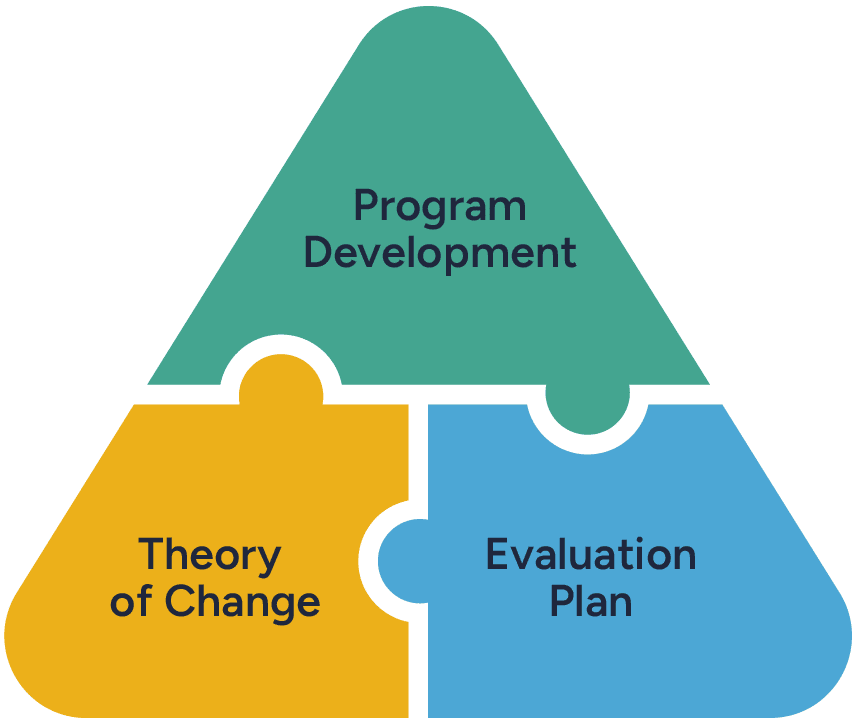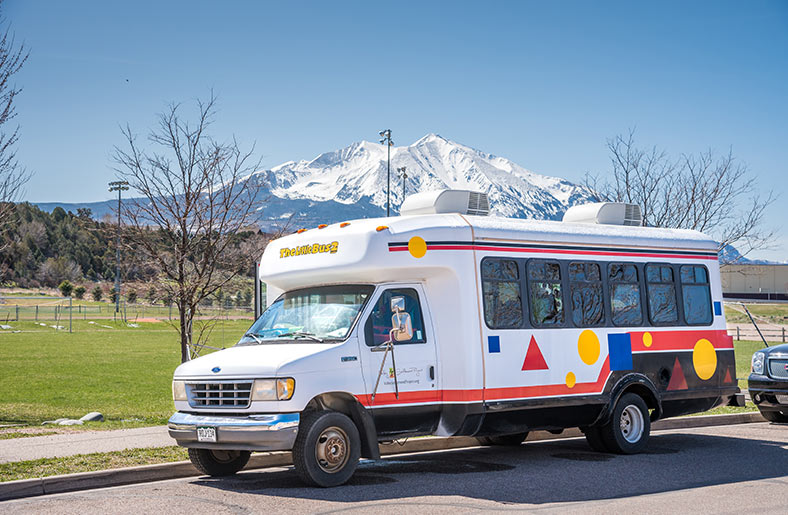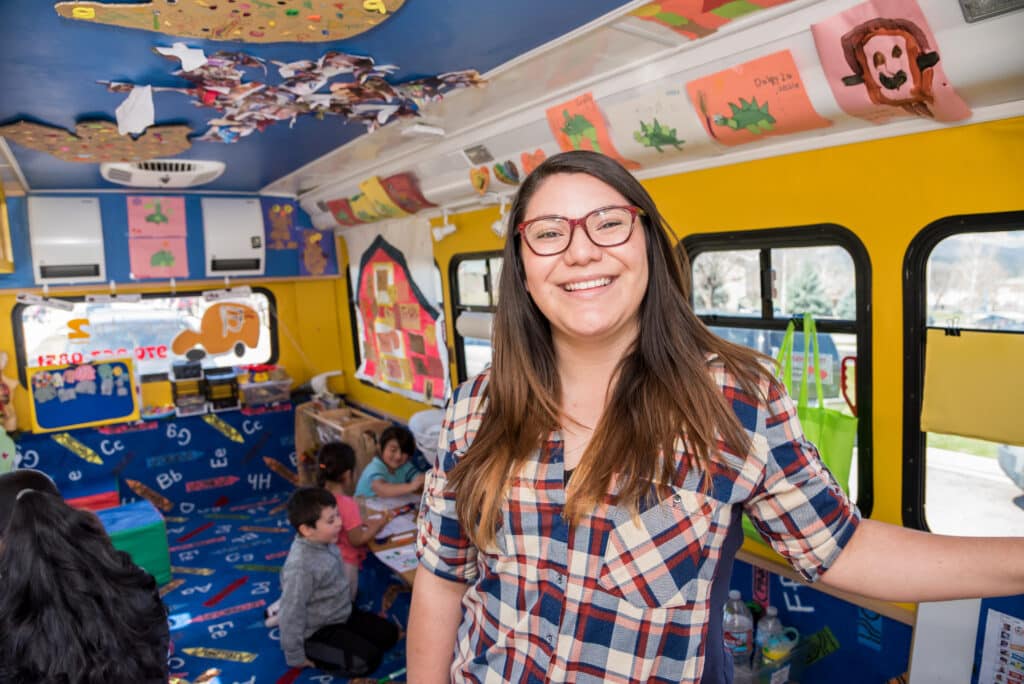Framework Overview
Start here for an introduction to the IDEAS Framework

Decades of research have shown it’s possible to improve outcomes for children and families facing adversity. However, the effects have generally been modest and haven’t improved over time.
Why is that the case? Part of the problem is that conventional approaches to program development and evaluation are holding us back.
Programs rarely work the same for everyone who receives them—some benefit more, and some benefit less or not at all. But typical research methods don’t usually investigate beyond the average, thus missing valuable information about what works for whom and in what contexts.
Funding and publishing incentives put pressure on innovators in the field of ECD to prove that their programs work rather than to learn about and improve them. This can lead to a tendency to focus on findings that confirm the program is effective and downplay or ignore anything to the contrary. This also leads to a “one and done” approach to evaluation, where the results of a single study are seen as adequate evidence that a program works and that no further evaluation is necessary.
Therefore, they risk being irrelevant, unhelpful, and unacceptable to those they aim to serve.
The field of ECD is too often siloed, and there are few venues to come together and learn from each other. There are even fewer venues to share what isn’t working. Downplaying negatives means the field doesn’t learn to avoid mistakes that have already been made or unproductive strategies that have already been tried.
Ideas
We’ve designed the IDEAS Impact Framework to help address the challenges listed above.
IDEAS stands for
Innovate
to solve unmet challenges
Develop
a clear and precise theory of change
Evaluate
the theory of change
Adapt
through fast-cycle iteration
Scale
promising programs
Critical Questions
Using the Framework allows us to go beyond whether an intervention works on average to ask critical questions, including:
What about it works?
If we understand the key ingredients, we are better able to replicate them.
How does it work?
Being specific about the underlying mechanisms can help us increase the impact.
For whom does it work, and for whom does it not work?
When we know who is and isn’t responding, we can make targeted adaptations to improve the outcomes.
In what contexts does it work?
If we evaluate the context in which it was implemented, we can better adapt the intervention for other settings.
Each of these questions points us toward the ultimate pursuit of the IDEAS Impact Framework:
How can we build better programs that achieve greater outcomes for more young children and their families?
Guiding PRinciples
The Framework includes four guiding principles, which are concepts and ways of working that address common challenges to achieving improved impact.
Click through the principles to learn more and view videos
Precision
Having a clear understanding of what a program entails and how it has an impact
What about it works? How does it work? For whom and in what contexts? The IDEAS Framework described in this toolkit can help you move from having a hunch about how a program works toward developing hypotheses that can be tested to drive the ongoing development of the program and demonstrate its efficacy. Furthermore, the knowledge generated can contribute to a broader understanding of risk, resilience, and change that will benefit the field.
Watch
The IDEAS Impact Framework: Precision
Members of teams who have worked with the IDEAS Impact Framework as part of the Frontiers of Innovation initiative explain their understanding and use of the principle of precision in their work.
Fast-Cycle Iteration
An innovation process that incorporates learning back into the design of the intervention
Project teams using the IDEAS Impact Framework often start by engaging in a series of low-cost, relatively small-scale tests, enabling them to establish feasibility and begin to explore the intervention’s theory of change. Each fast-cycle iteration is an opportunity to make refinements, incorporate learning about what’s working and what isn’t, and move toward higher levels of evidence at an accelerated pace. The IDEAS approach to fast-cycle iteration is one of multiple rapid learning methods that have emerged in recent years.
Watch
The IDEAS Impact Framework: Fast-Cycle Iteration
Members of the team working on Attachment Vitamins discuss the principle of fast-cycle iteration and how it has strengthened the program.
Co-creation
Bringing together different parties to produce a mutually valued outcome
The IDEAS Framework approach to innovation brings together community members, researchers, and practitioners to develop, implement, and test ideas. This process increases the likelihood that the programs developed meet communities’ unmet challenges, are relevant to real-world contexts, and can eventually scale. Co-creation informs all aspects and phases of work in the Framework. The IDEAS approach to co-creation is consistent in some ways with other participatory research methods, and community engagement approaches.
Watch
The IDEAS Impact Framework: Co-creation
Members of several teams that have applied the IDEAS Impact Framework as part of the Frontiers of Innovation initiative discuss the principle of co-creation and how it has influenced their programs.
Shared Learning
Learning from failure as well as success and sharing this learning
Also central to the IDEAS Impact Framework is the principle of shared learning. In the early childhood field, there is a tendency to emphasize positive results and downplay, ignore, or explain away negative results. A central tenet of the IDEAS Impact Framework is that gaining insights about what does not work is equally as important as learning what does work, whether within the intervention design, program recruitment, implementation, materials, processes, data collection, or outcomes.
Watch
The IDEAS Impact Framework: Shared Learning
Members of the Bienestar en Tu Embarazo (Wellness in Your Pregnancy) team from Mexico and the Fortalecendo Laços (Strengthening Bonds) team from Brazil discuss the importance of shared learning in their interventions.
Find more resources on these Guiding Principles here.
Three Components
The guiding principles can be put into action through these three key components:
Theory of Change
A theory of change (ToC) is a detailed set of beliefs about specific observable changes expected to result from a program. A clear and concise ToC facilitates precision by articulating what a program entails and how it is meant to have an impact. The IDEAS Framework approach to ToC includes four domains: strategies, targets, outcomes, and moderators.
Evaluation
An evaluation plan includes measures and processes that will be used to gather information about the impact of a particular program. Within the IDEAS Impact Framework, the ultimate goal of evaluation is to investigate the program’s ToC to drive ongoing improvement. We do this by designing an evaluation plan closely aligned with the ToC. Another equally important goal is to engage in shared learning.
Program Development
The principle of fast-cycle iteration is put into action by using lessons learned from each round of evaluation to inform ongoing program development aimed at achieving greater impact at scale.

These tools—a clear theory of change, an evaluation plan closely tied to this ToC, and ongoing program development—work in reciprocal and mutually informative ways to move your program forward in accordance with the guiding principles. A key way to implement the co-creation principle is to consider who is included as you develop all three components.

See how the El Busesito mobile preschool program used the IDEAS Impact Framework to drive toward greater impact.
El Busesito (the Little Bus) is a mobile preschool program developed by Valley Settlement, an organization that provides an array of programs designed by and for the Latinx immigrant community in the Roaring Fork Valley of Colorado. The El Busesito fleet of “little buses” provides bilingual preschool education to nearly 100 students who might otherwise have no access to preschool. Parents are engaged as partners in their child’s education through monthly volunteering, home visits, and three Family Nights each year. Why a bus? When Valley Settlement community organizers first interviewed families in 2011 and 2012, they found that fewer than 1% of preschool-age children in under-resourced Latinx families in the valley were enrolled in preschool. Transportation was cited as a common barrier. Mobile buses reduce the barrier of transportation and provide flexibility to adjust to changing community needs. This process of engaging deeply with the community to identify and address unmet needs is an excellent example of co-creation.
Since 2018, the team at Valley Settlement has used the IDEAS Framework to engage in fast-cycle iteration across all of their programs, including El Busesito. Learn more about how this team has engaged with the three components of the Framework in each of the following sections.
